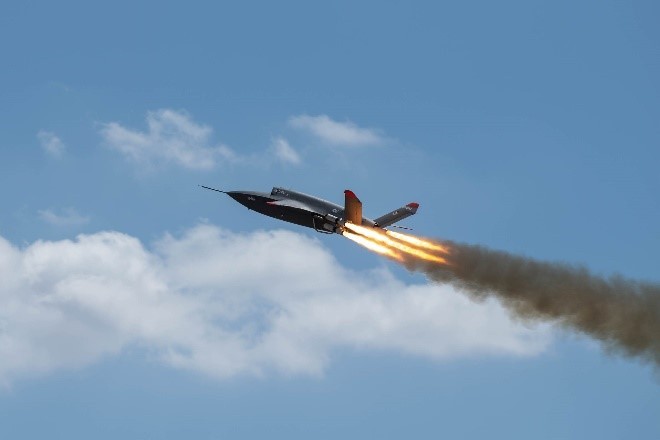The Air Force Research Laboratory (AFRL) and Kratos Defense and Security Solutions successfully tested the XQ-58A Valkyrie Block 2 unmanned aircraft last week at the Yuma Proving Ground, as reported first by Interesting Engineering.
Unmanned aircraft systems (UAS) have been utilized in combat for about 20 years. Despite being costly and innovative, these methods allowed the military to carry out operations in hazardous areas without putting soldiers in danger.
However, as counter-UAS tactics have advanced, there has been an increase in the demand for single-use UAS and its combat employment.

XQ-58A's Flight Test
The flight used redundant radios and communications ("comms") packages for range and operational missions far from government ranges, and it also demonstrated encrypted connections with them. The aircraft traveled to the landing area in a simulated loss of communications situation for its final test point.
It exhibited key autonomy for the mission's last phase of flight and recovery without RF communications by landing within the target zone. As the system returns to "base," this feature will lessen the chance of enemy RF comms emissions being detected and tracked, as per Kratos' press release.
This flight test marked a significant turning point in Kratos' support of AFRL's Autonomous Collaborative Enabling Technologies (ACET) portfolio. The research and development efforts of ACET are focused on ACPs, such as collaborative combat aircraft (CCA).
The extensive capabilities displayed on this flight have equipped the XQ-58 for further ACP investigation.
All About XQ-58A
The XQ-58A is a long-range subsonic drone. The 30-foot aircraft can travel at 548 miles (882 km) per hour, while the initial model's carrying capacity was roughly 1,200 pounds (544 kg).
The drone is anticipated to have a service ceiling of 45,000 feet (14,000 m) and a range of 3,500 miles (5,600 km). In 2019, the drone successfully completed its first flight, and Kratos showed last year that the Valkyrie could transport a smaller drone as its cargo and launch it mid-air as needed to fulfill operational requirements.
The aircraft may be deployed in a swarm and is also intended to accompany US Air Force advanced fighters while they distribute weapons or surveillance equipment.
Kratos is currently working on Block 2 of the UAS and has just finished the first test of the upgraded version. This follows the evaluation of its functionality and aerodynamic performance.
According to the media release, the Valkyrie may fly further, heavier, and with greater mission weights, thanks to the Block 2 aircraft's successful test.
Even though the precise details of these accomplishments were withheld from the media, the press release indicated that they exceeded the levels that had been authorized.
"Wargames and analyses consistently report that mass is the solution to enable winning in today's conflict arena and that a lower count of exquisite systems consistently fails," Steve Fendly, the President of Kratos Unmanned Systems Division, said in a statement.
"Kratos is laser-focused on the disruptive, affordable solution set."
Related Article : Iran Seizes Unmanned US Navy Vessels, Reveals Pentagon's Use of AI and Sea Drones in Patrolling Gulf Region
This article is owned by Tech Times
Written by Jace Dela Cruz
ⓒ 2025 TECHTIMES.com All rights reserved. Do not reproduce without permission.




